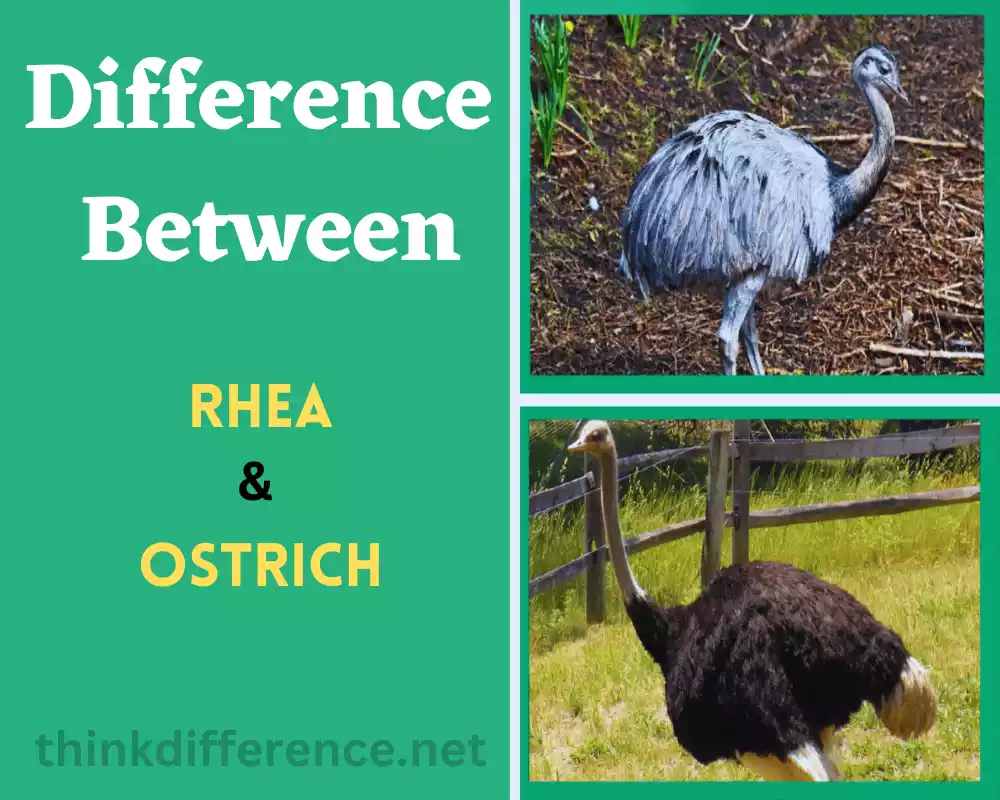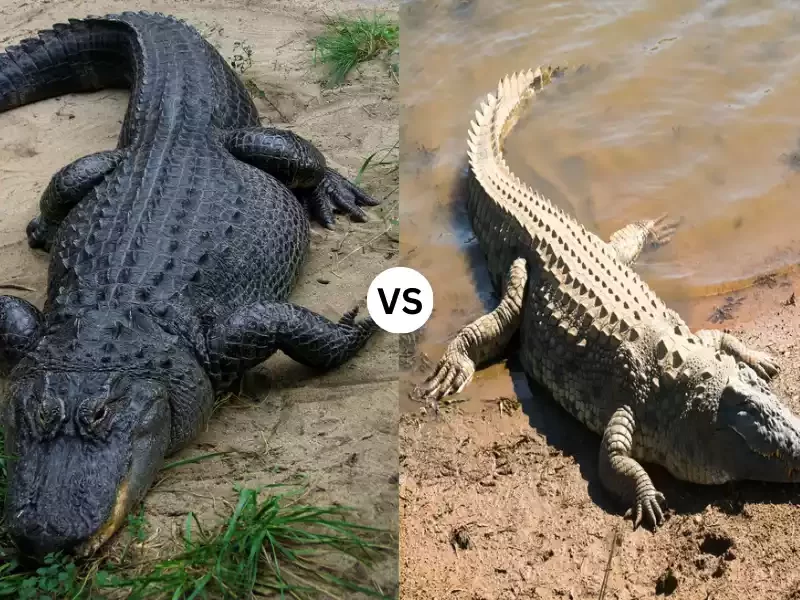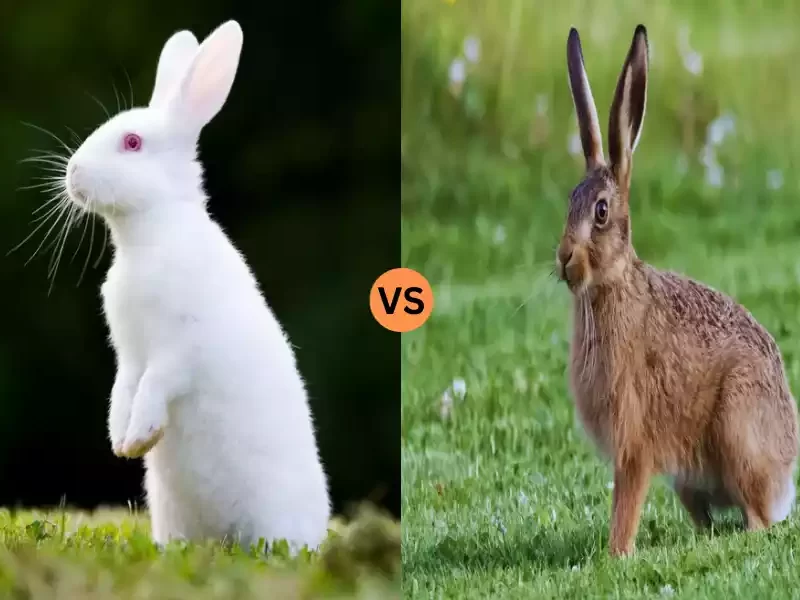Rhea and Ostrich stand out as remarkable flightless birds. Both belong to the ratite family, characterized by their flat breastbones and inability to fly. Despite their similarities, there are distinct differences between these two fascinating creatures. This article will investigate the unique traits, habitat requirements and behaviors of both rhea and ostrich species.
A Brief Overview of Rhea
Rhea is a large flightless bird native to South America that belongs to the Rheidae family; which also encompasses emus and ostriches. Two varieties exist – Rhea americana is larger while Rhea pennata has shorter legs.
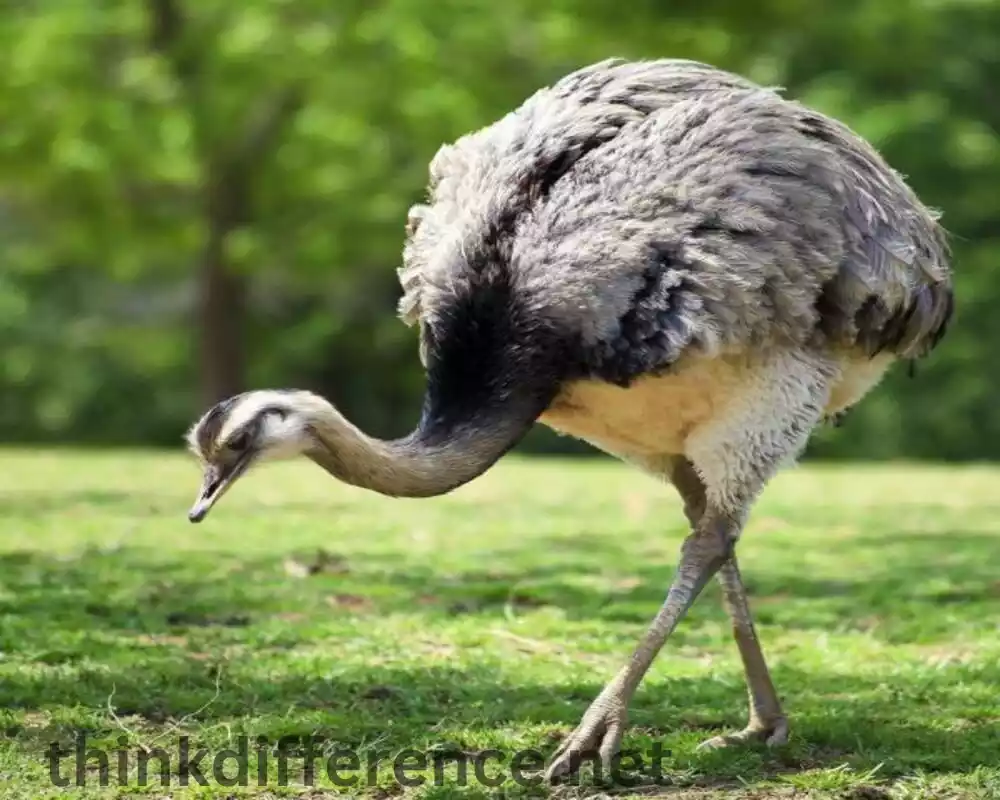
Rhea birds are well known for their tall stature. Adult males can reach 4-5 feet and weight up to 88 pounds; three-toed, strong feet adapt well for running while long legs ensure fast speeds when it comes to running races. Their feathers have soft feathers with gray to brown plumage that allows for excellent camouflage within their habitats.
They can be found across South America in grasslands, shrublands and open areas. Particularly Argentina, Brazil and Uruguay. Being herbivorous eaters themselves, the birds consume many types of plants, fruit seeds and insects as food sources.
Rheas are social birds and typically form flocks or groups. Rheas communicate using whistles, hisses and booming noises as their means of expression. Male rheas create territories in order to attract females through elaborate courtship displays including dances and sounds during breeding season.
Rhea birds play an essential role in an ecosystem by dispersing seeds to refresh vegetation, helping renew it over time. Culturally and economically significant for South American nations alike, their feathers and eggshells have long been utilized as part of traditional crafts while their meat may occasionally be consumed.
The International Union for Conservation of Nature has classified greater rhea populations as Near Threatened due to habitat loss and hunting pressure, while lesser rhea are considered “Vulnerable”. To safeguard both of these species in their ranges, efforts are being undertaken by IUCN in protecting both populations and habitats within their ranges.
A Brief Overview of Ostrich
Ostriches are one of the largest bird species found worldwide and are well-known for their distinct appearance and adaptations. Ostriches belong to the Struthionidae family; native to Africa they can be found both savannas, grasslands and desert areas.
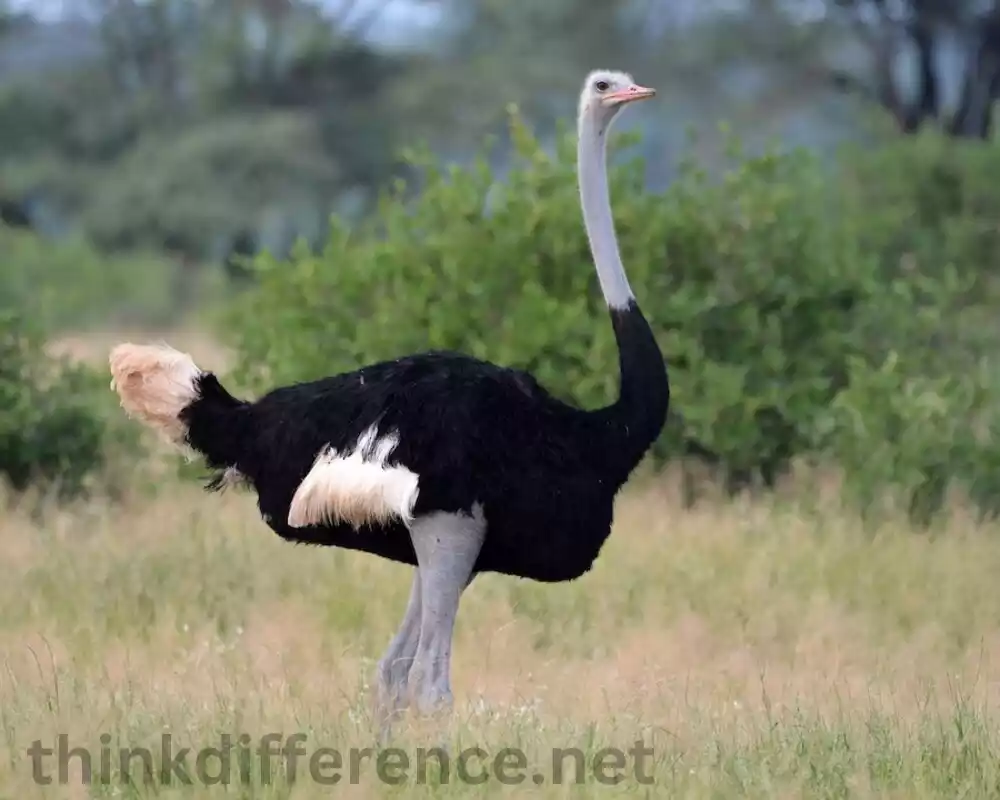
Ostriches are distinguished by their immense size; males can reach heights between 7 to 9 feet (2.1 to 2.7 meters) tall, and weigh up to 150 kilograms (330 pounds). Ostriches possess small heads with large eyes as well as long necks; their feather patterns include black on males while brown hues dominate in females.
Ostrich legs are one of their most striking characteristics; each foot only contains two toes with clawed toes on them and an ostrich can reach speeds of 64 kilometers an hour, 40 miles an hour; they are the fastest bird species on the planet!
Ostriches live in colonies and are highly social birds. Ostriches primarily feed on plant matter such as grasses, plants and seeds as well as insects; thanks to their unique digestive systems they’re even capable of extracting moisture from food!
Ostriches engage in elaborate courtship displays. Male ostriches perform complex dances that include wing-flapping or bill snapping; both males and females incubate their eggs together, with female ostriches typically producing larger eggs of 1.5 kilograms (3.3 pounds) weight that weigh up to three days later when laid by males.
The International Union for Conservation of Nature has classified ostriches as species “Least Concern”. Ostriches are relatively abundant throughout their native habitats and their adaptable behavior contributes to maintaining stable populations.
Ostriches have long been domesticated as pets in various parts of the world for their feathers, leather, and meat – often considered an economic factor that helps support local economies through farming activities.
Importance of understanding the differences between Rhea and Ostrich

Understanding the differences between Rhea and Ostrich is Important for several reasons:
- Conservation: Both Rhea and Ostrich face various conservation challenges, including habitat loss, hunting pressure, and population decline. By understanding their distinct characteristics and ecological needs, conservation efforts can be tailored to address their specific requirements and ensure their long-term survival.
- Ecological Balance: Rhea and Ostrich play important roles in their respective ecosystems. They contribute to seed dispersal, control insect populations, and impact vegetation dynamics. Understanding their ecological functions helps in maintaining the balance and health of their habitats.
- Economic Significance: Rhea and Ostrich have economic value in different regions. They are farmed for their meat, feathers, leather, and eggs, contributing to local economies and livelihoods. Recognizing their economic potential can promote sustainable farming practices and support local communities.
- Species Management: Knowing the differences between Rhea and Ostrich aids in their proper identification, especially in cases of captive breeding programs, wildlife management, or research. Accurate species identification is crucial for implementing effective management strategies and maintaining genetic diversity.
- Scientific Understanding: Studying the differences between Rhea and Ostrich contributes to our broader knowledge of avian biology, evolution, and adaptations. Their unique characteristics provide insights into flightlessness, reproductive strategies, foraging behaviors, and more, enhancing our understanding of avian diversity.
- Education and Awareness: Differentiating between Rhea and Ostrich helps in educating the public and raising awareness about these fascinating birds. Understanding their distinct features, behaviors, and conservation needs fosters appreciation for their natural heritage and promotes a sense of responsibility towards their protection.
Comprehending the differences between Rhea and Ostrich is valuable for conservation, ecological understanding, species management, scientific research, and promoting public awareness. By recognizing their unique traits and needs, we can work towards preserving these remarkable birds and their habitats.
Physical Characteristics
Rhea:
1. Size and Weight:
- Male Rheas are large birds, standing between 120 to 150 cm (4 to 5 feet).
- They can weigh up to 88 pounds (40 kg).
2. Feathers:
- Rheas have soft feathers that vary in color from gray to brown.
- Their feathers provide excellent camouflage in their natural habitat.
3. Legs and Feet:
- Rheas have long and strong legs adapted for running.
- They have three-toed feet with sharp claws.
Ostrich:
1. Size and Weight:
- Ostriches are the largest living species of bird.
- Male adults typically reach heights between 7 to 9 feet (2,1 meters and 2,7 meters).
- Pigs have the capacity to reach weights up to 330 pounds (150 kilograms).
2. Feathers:
- Ostriches have predominantly black and white feathers.
- Males have more prominent black plumage, while females have a more brownish coloration.
3. Legs and Feet:
- Ostriches have long and powerful legs.
- Each foot has only two toes, with a strong claw on each toe.
- They are well-adapted for running, with their legs providing speed and agility.
Habitat and Geographic Distribution
Rhea:
1. Geographic Distribution:
- Rheas are native to South America.
- Find them in Argentina, Brazil Uruguay and Paraguay.
- The greater rhea (Rhea americana) is primarily found in eastern and southern South America.
- The lesser rhea (Rhea pennata) is primarily found in the grasslands and shrublands of southern South America.
2. Habitat:
- Rheas are adaptable birds that inhabit an array of habitats open plains, savannas, grasslands and shrublands.
- They prefer areas with open spaces and vegetation cover that provides them with suitable foraging grounds and nesting sites.
- Rheas are adapted to diverse habitats, ranging from lowlands to higher elevations in the Andean foothills.
- They can tolerate different climate conditions, including hot and dry areas as well as cooler regions.
Ostrich:
1. Geographic Distribution:
- Ostriches are native to Africa.
- Find them across Africa including South Africa Namibia Botswana Zimbabwe Kenya Tanzania and Ethiopia.
- Australians have introduced ostriches and they have established feral populations there.
2. Habitat:
- Ostriches inhabit many habitats throughout Africa from grasslands and savannas to semi-deserts and open spaces.
- Being able to obtain water through eating plant species allows these creatures to survive in dry and arid areas.
- Ostriches can tolerate extreme temperature variations, ranging from hot desert environments to cooler areas.
- They often inhabit open areas where they have a clear line of sight to detect potential predators and have space for their swift running capabilities.
Behavior and Social Structure
Rhea:
1. Behavior:
- Rheas are primarily ground-dwelling birds and are well-adapted for running.
- Running at speeds up to 40 miles per hour or 64 kilometers per hour, runners have achieved top speeds.
- Rheas are mostly diurnal birds their activity usually spikes around nightfall.
2. Social Structure:
- Rheas typically live in small family groups or flocks.
- The social structure of rheas is often based on a dominant male and several females.
- Outside of the breeding season, males may form small bachelor groups.
- In flocks, rheas communicate through vocalizations, body movements, and displays.
Ostrich:
1. Behavior:
- Ostriches are known for their speed and are considered the fastest running bird.
- They possess powerful legs to sprint or kick efficiently at speeds reaching 64 kilometers per hour.
- Ostriches are diurnal, primarily active during the day.
2. Social Structure:
- Ostriches have a social structure that is typically based on small groups or flocks.
- These flocks are often composed of a dominant male, several females, and their offspring.
- Male Ostriches can be quite territorial and will defend their territory from intruders with fierce determination.
- Within the flock, ostriches communicate through vocalizations, body postures, and displays.
Both rheas and ostriches exhibit social behaviors and live in groups or flocks, though the specific social structures may vary. They rely on communication and coordinated behaviors to establish territories, find mates, and protect themselves from predators.
Adaptations and Survival Strategies
Rhea:
Adaptations:
- Flightlessness: Rheas have lost the ability to fly, but they have evolved strong and powerful legs for running. This adaptation helps them navigate their grassland and shrubland habitats more efficiently.
- Camouflage: Rheas have feathers that provide excellent camouflage in their natural habitat. Their feathers, in colors such as gray and brown, help them blend in with their surroundings to avoid predators and remain safe.
- Vigilance and Speed: Rheas have keen eyesight and a strong sense of hearing, allowing them to detect potential threats from a distance. When threatened, they can quickly take off running, reaching high speeds to evade predators.
Survival Strategies:
- Group Living: Rheas often live in small family groups or flocks. This social structure provides them with increased vigilance against predators and enables cooperative behaviors, such as alerting each other to potential dangers.
- Alarm Calls: Rheas have loud, booming calls that they use to alert others in their group about approaching predators. This vocal communication helps coordinate the group’s response to potential threats.
- Nesting Strategies: Female rheas lay their eggs in communal nests on the ground, which provides protection through the safety of numbers. By sharing a nest with other females, they can collectively defend the eggs and enhance survival rates.
Ostrich:
Adaptations:
- Speed and Agility: Ostriches are the fastest running birds, thanks to their long legs and strong muscles. This adaptation allows them to outrun most predators and increases their chances of survival.
- Large Eyes and Excellent Vision: Ostriches have large eyes, providing them with excellent vision. This adaptation helps them detect predators from afar and allows them to see potential threats in their open grassland habitats.
- Powerful Kicks: Ostriches have strong legs with powerful kicks that they can use for defense. Their kicks can be lethal to predators, making them formidable opponents.
Survival Strategies:
- Group Living: Ostriches often live in small groups or flocks, providing increased protection against predators. The collective vigilance of the group helps in detecting and deterring potential threats.
- Nesting Strategies: Ostriches build nests on the ground, which they line with vegetation and soil. The nests are well-hidden and camouflaged, reducing the risk of predation. Male and female ostriches take turns incubating the eggs, enhancing the chances of successful hatching and survival.
- Threat Displays: When threatened, ostriches may engage in threat displays, such as lowering their necks, spreading their wings, and hissing. These displays can intimidate predators and serve as warning signals to other ostriches in the vicinity.
Both rheas and ostriches can survive their environments thanks to their adaptations, providing an advantage.
Economic and Ecological Significance
Rhea:
1. Economic Significance:
- Ecotourism: Rheas, particularly the greater rhea, can attract ecotourism activities in their native range. Birdwatchers and nature enthusiasts may visit areas where rheas occur, contributing to local economies through tourism-related expenditures.
- Agriculture: Rheas can play a role in agricultural pest control. As insects and invertebrates that consume plants can be potentially hazardous, chemical pesticides should not be needed as protection measures.
2. Ecological Significance:
- Seed Dispersal: Rheas feed on a variety of plants and fruits, aiding in seed dispersal. They consume seeds and later disperse them in their feces, contributing to plant diversity and regeneration in their habitats.
- Grazing Effects: As herbivores, rheas graze on grasses and vegetation, influencing the structure and composition of the vegetation communities they inhabit. Their grazing habits can shape the abundance and distribution of plant species, impacting the overall ecosystem dynamics.
Ostrich:
1. Economic Significance:
- Farming: Ostriches are farmed for various economic purposes. Their meat is consumed, and their hides are used for leather production. Ostrich feathers are sought after for fashion and decorative purposes. The farming of ostriches can provide income and employment opportunities in certain regions.
- Tourism: Ostrich farms and encounters with these impressive birds can attract tourists, especially in areas where ostrich farming is prevalent. Visitors may be interested in observing and learning about ostriches, leading to tourism-related economic benefits.
2. Ecological Significance:
- Seed Dispersal: Ostriches play a role in seed dispersal as they consume a variety of plant material, including fruits and seeds. They can aid in the spread of plant species by ingesting seeds and dispersing them in their feces.
- Ecosystem Engineering: Ostriches create shallow nests and scrape the soil with their feet when constructing their nests. These activities can have localized effects on the soil and vegetation, creating small disturbances that may influence plant germination and nutrient cycling.
Understanding the economic and ecological significance of rheas and ostriches is important for balancing their conservation and management. By recognizing their roles in ecosystems and their potential contributions to local economies, stakeholders can make informed decisions to promote their sustainable use and conservation.
Conservation Status
Rhea:
1. Conservation Status:
- Greater Rhea: According to the Red List of Threatened Species published by the International Union for Conservation of Nature (IUCN), this species has been given low priority. Their large and stable population are relatively secure despite habitat loss in certain locations as well as hunting pressure.
- Lesser Rhea: According to IUCN Red List criteria, lesser Rhea is classified as of least concern and Darwin’s Rhea has been designated “vulnerable”, due to habitat destruction and hunting pressure in certain regions.
2. Conservation Efforts:
- Protected Areas: Establishing and effectively managing protected areas, such as national parks and reserves, can help conserve the habitats where rheas occur. These protected areas provide important refuges for rheas and other wildlife.
- Habitat Restoration: Initiatives focusing on restoring and conserving grasslands and shrublands, which are important habitats for rheas, can contribute to their conservation. This involves efforts such as habitat reclamation, invasive species control, and sustainable land management practices.
Ostrich:
1. Conservation Status:
- The common ostrich is currently listed as “Least Concern” on the IUCN Red List. It has a widespread distribution and a relatively stable population. Specific subspecies or populations of ostriches may face local threats and may have different conservation statuses.
2. Conservation Efforts:
- Protected Areas: Protecting and managing key habitats where ostriches occur, such as national parks and reserves, can contribute to their conservation. These protected areas provide refuge and support for ostrich populations.
- Sustainable Use: Encourage eco-friendly practices such as responsible breeding and animal welfare while adhering to legal and ethical regulations to guarantee the viability of farmed populations.
- Monitoring and Research: Monitoring ostrich populations and conducting research on their ecology, behavior, and threats can provide valuable information for conservation planning and management strategies. This includes studying their habitat requirements, population dynamics, and responses to human activities.
To ensure the long-term survival of rheas, it is crucial that their conservation status be monitored regularly and assessed accurately.
Comparison table of Rhea and Ostrich
Here’s a comparison table highlighting some key differences between Rhea and Ostrich:
| Characteristic | Rhea | Ostrich |
|---|---|---|
| Size | Smaller (4-5 ft / 120-150 cm) | Larger (7-9 ft / 2.1-2.7 m) |
| Weight | Up to 88 lb (40 kg) | Up to 330 lb (150 kg) |
| Flight Capability | Flightless | Flightless |
| Feathers | Gray to brown | Predominantly black and white |
| Leg Structure | Three-toed | Two-toed |
| Foot Adaptations | Sharp claws | Strong claws for kicking |
| Geographic Distribution | South America | Africa (with feral populations in other parts of the world) |
| Habitat | Grasslands, shrublands | Savannas, grasslands, semi-deserts |
| Social Structure | Small groups or flocks | Small groups or flocks |
| Conservation Status | Least Concern | Least Concern |
Conclusion
Rhea and Ostrich are remarkable examples of flightless birds that have adapted to their environments in distinctive ways. Their unique characteristics, behaviors, and ecological importance make them subjects of intrigue and admiration. By understanding and appreciating these incredible creatures, we can contribute to their conservation and ensure that they continue to thrive in the wild.

